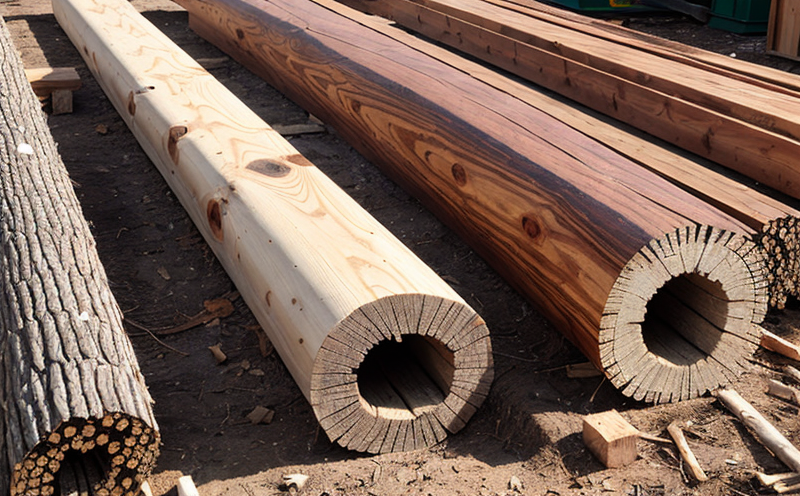Surface Hardness Testing of Treated Wood
In the agriculture and forestry sector, wood durability and preservation testing play a critical role in ensuring that treated wood products meet stringent quality standards. Surface hardness is one such parameter that affects the longevity and performance of these materials. This section delves into the specifics of surface hardness testing for treated wood.
Surface hardness is an essential property to evaluate because it influences how well wood resists wear, abrasion, and mechanical damage. High surface hardness ensures better protection against pests and environmental factors that can degrade wood quality over time. The testing process involves assessing the resistance of the wood's outer layer to indentation or scratching by specialized instruments.
The testing methodology typically adheres to international standards such as ISO 14609, which provides a comprehensive framework for surface hardness testing of wood products. This standard ensures that all tests are conducted under consistent conditions, thereby enhancing reliability and comparability across different laboratories worldwide.
For accurate measurements, the test specimens must be prepared according to specific guidelines outlined in these standards. Specimens should be free from defects like knots or splits, which could skew results. The testing apparatus used is calibrated to deliver precise readings that reflect true surface hardness values accurately.
The process begins by selecting appropriate samples representing typical product types within the treated wood category. These samples are then conditioned to standard atmospheric conditions before undergoing indentation tests using controlled force applications. A diamond indenter or similar device records the depth of penetration into the wood's surface, from which hardness values can be calculated.
Understanding these parameters helps quality managers and compliance officers ensure that treated wood products comply with regulatory requirements. By focusing on surface hardness testing early in development stages, R&D engineers gain valuable insights into optimizing product formulations for enhanced durability and performance.
Surface hardness testing also supports procurement decisions by providing objective data about supplier offerings. This information allows organizations to choose suppliers who consistently deliver high-quality treated wood products capable of withstanding harsh operating environments.
Applied Standards
| Standard | Description |
|---|---|
| ISO 14609:2018 | This international standard specifies the methods for determining surface hardness of wood products using a portable instrument. It provides detailed instructions on specimen preparation, testing procedures, and data interpretation. |
Customer Impact and Satisfaction
By conducting rigorous surface hardness tests, laboratories like ours contribute significantly to customer satisfaction by delivering accurate results that reflect the true quality of treated wood products. Our testing ensures that clients receive reliable data they can use confidently when making informed decisions.
In addition to meeting regulatory standards, our services help businesses enhance their brand reputation through consistent product performance and longevity. When customers know that their suppliers are using reputable labs for quality assurance tests like surface hardness measurement, it fosters trust and loyalty among stakeholders involved in the supply chain.
Our commitment to excellence extends beyond just testing; we also offer consultative support during the development phase of new products or modifications to existing ones. This proactive approach enables our clients to anticipate potential challenges related to surface hardness early on, allowing them to make necessary adjustments promptly.
International Acceptance and Recognition
The methodologies employed in our laboratory are widely accepted globally due to their adherence to internationally recognized standards. This international recognition means that results obtained here are valid not only locally but also across borders, facilitating smoother trade between countries.
Our reputation for accuracy and reliability has earned us a strong presence among leading industries worldwide. Many renowned organizations have chosen our services because they trust the integrity of our testing methods. In turn, this strengthens their own brands by associating with reputable partners committed to maintaining high standards in every aspect of product development.
Our participation in various international forums and collaborations further underscores our commitment to staying at the forefront of industry advancements. By engaging actively within these communities, we ensure that our practices remain up-to-date with evolving best practices globally while contributing positively towards common goals shared by all participants involved.





